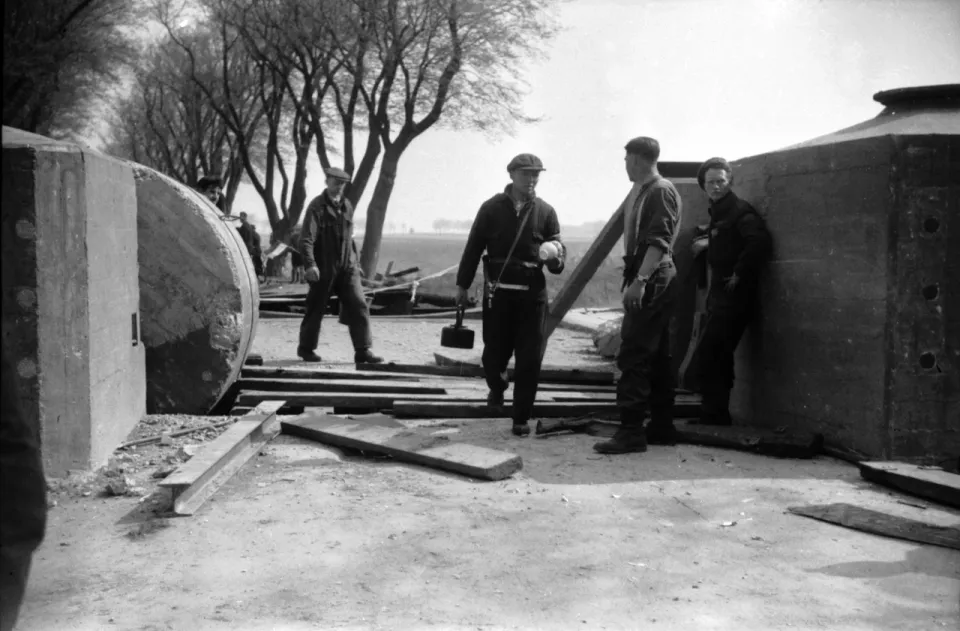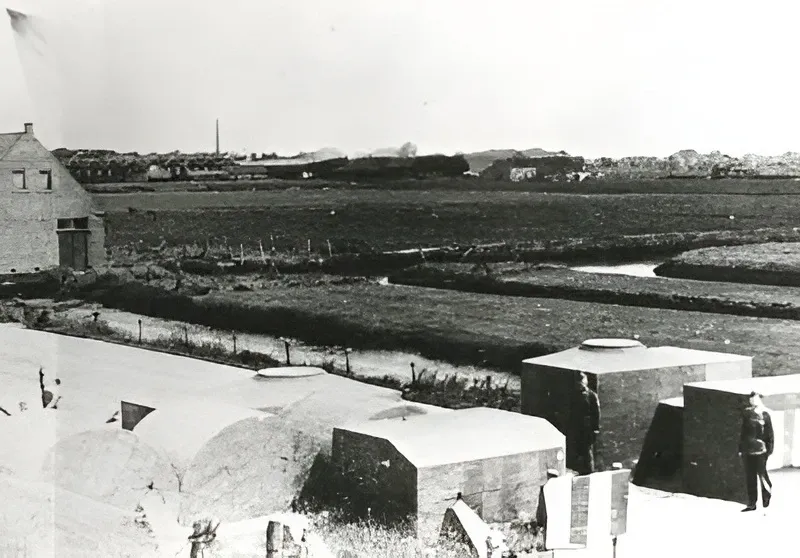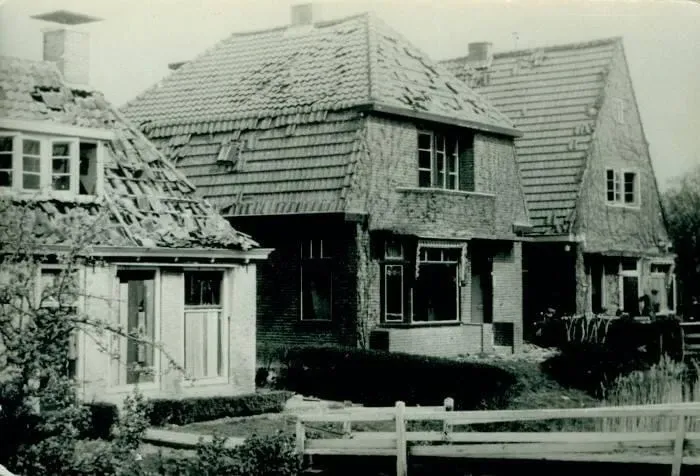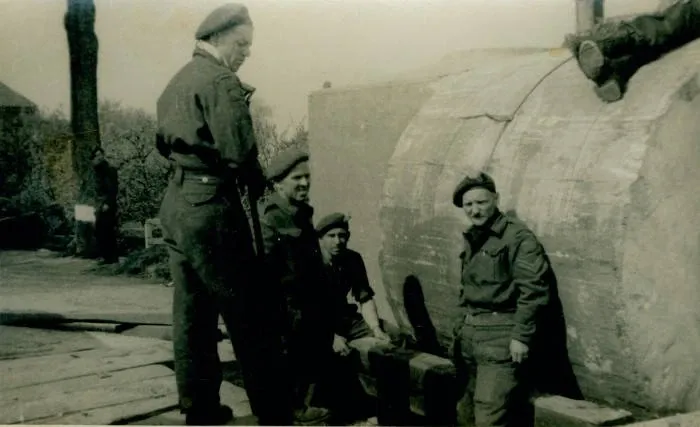Locations
193 to 216 of 5486 results
-
Cafe de Spoek
Cafe de Spoek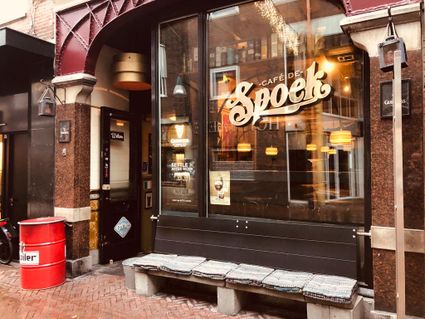 Leeuwarden
Leeuwarden
from your location
-
Brocante en Antiek
Brocante en Antiek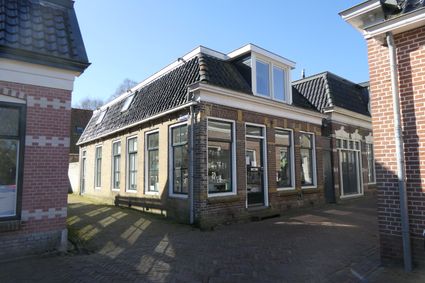 Sloten fr
Sloten fr
from your location
-
Drentseweg 23 t/m 39
Drentseweg 23 t/m 39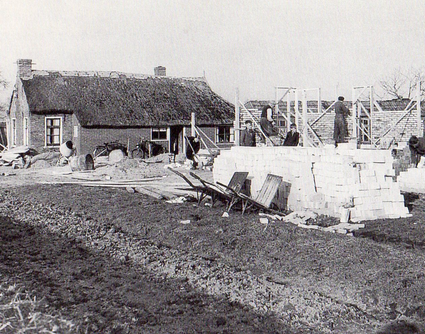 Appelscha
Appelscha
from your location
-
Van Baerdtstraat 2
Van Baerdtstraat 2 Wolvega
Wolvega
from your location
-
Mariakerk Buitenpost
Mariakerk Buitenpost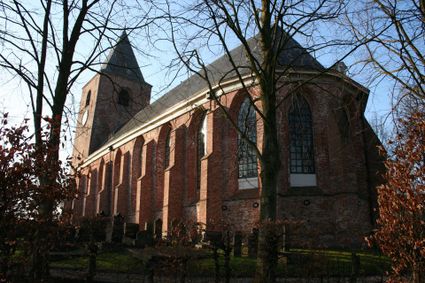 Buitenpost
Buitenpost
from your location
-
Farm Shop Wâldpleats
Farm Shop Wâldpleats Burgum
Burgum
from your location
-
The liberation of Friesland 1
The liberation of Friesland 1
In early April, it became clear that the liberation of Friesland was imminent. Although the province had not suffered a real Hunger Winter like other parts of the Netherlands, there were severe shortages of just about everything. And the terror of the occupying forces was growing. This also led to increased resistance against the occupying forces. The battle between the two was tougher than ever in early 1945.
In Friesland, assault groups known as Knokploegen (KP) were responsible for most acts of resistance. But there were other groups too. On the orders of the Dutch government in London, all these groups were merged into the Dutch Domestic Armed Forces (NBS). In Friesland, this happened on 12 December 1944.
The NBS, popularly referred to as the BS, gave the armed resistance an organisation with a clear structure. The NBS was also supposed to play a role in the upcoming liberation. To this end, resistance groups were provided with weapons from autumn 1944. These were dropped from the air.
On 8 April, Radio Orange broadcast the message "The bottle is empty." This was the signal for the NBS to start carrying out sabotage operations 36 hours later. The aim was to make it as difficult as possible for the Germans to defend themselves against the approaching Allied forces.
The resistance did this by putting bridges and railways out of order, blocking waterways and blocking roads. The response of the occupying forces was ruthless. In retaliation, dozens more prisoners were shot at different times and places.Once the Canadians entered Friesland on 12 April, they were supported extremely effectively by the Frisian resistance. Because it was superbly organised, they were able to help the Canadians take control of important bridges, repair damaged bridges, and advise on the most favourable route.
By 18 April, the whole province was liberated except for the Wadden Islands (these were liberated in late May and in June). Compared to other provinces, there was little fighting in Friesland. Overall, the few thousand German troops who had been unable to flee Friesland were defeated by the Canadians relatively quickly.
The commander of the Royal Canadian Dragoons, Lieutenant Colonel Landell, praised the actions of the resistance by stating "Friesland liberated herself." While that may be a bit of an exaggeration, the actions of the Frisian resistance undoubtedly accelerated the liberation. And reduced the number of casualties on the Allied side.
In confrontations with German troops and their Dutch accomplices, at least 31 resistance fighters lost their lives. On the Allied side, at least eleven Canadians and one Frenchman were killed. The fighting and shelling also resulted in dozens of civilian casualties. The number of casualties on the German side is not known, but probably ran into the hundreds. With 320 houses destroyed and 4,000 damaged and 80 bridges destroyed, Friesland was materially the least damaged province in the Netherlands.
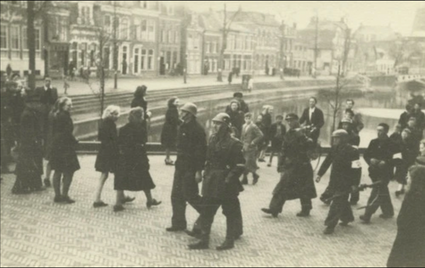 Willemsoord
Willemsoord
from your location
-
-
Kampeerterrein Stortemelk
Kampeerterrein Stortemelk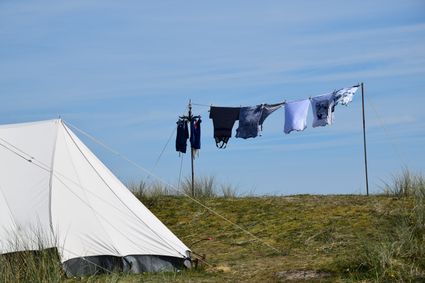 Vlieland
Vlieland
from your location
-
Hotel Workum - Panorama Suite
Hotel Workum - Panorama Suite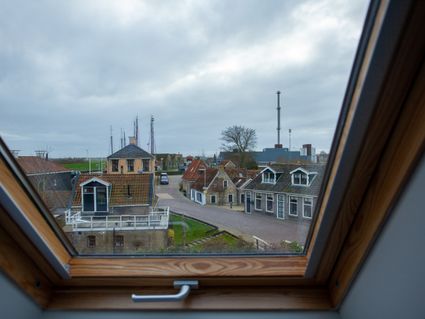 Workum
Workum
Direct boekbaar
from your location
-
Stadswandeling Dokkum
Stadswandeling Dokkum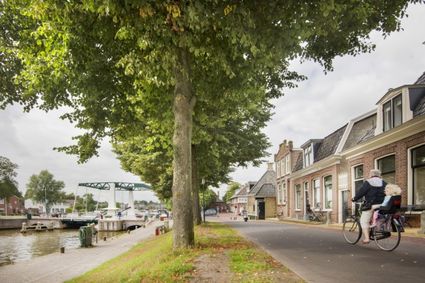 Dokkum
Dokkum
from your location
-
Intens Genieten
Intens Genieten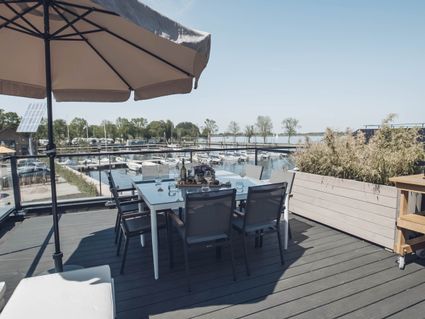 Offingawier
Offingawier
Direct boekbaar
from your location
-
Sint-Nicolaaskerk Húns
Sint-Nicolaaskerk Húns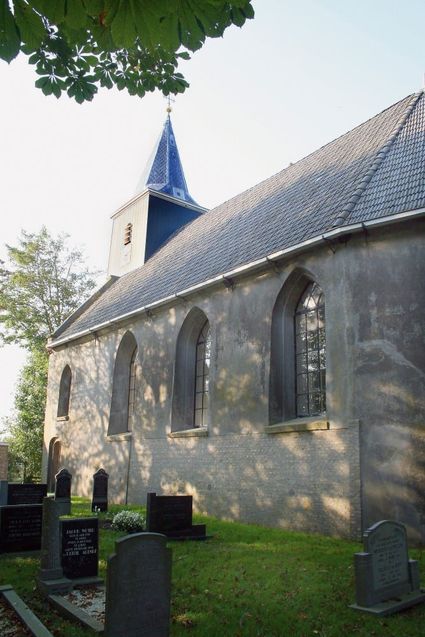 Húns
Húns
from your location
-
Rentenierswoningen Greate Buorren
Rentenierswoningen Greate Buorren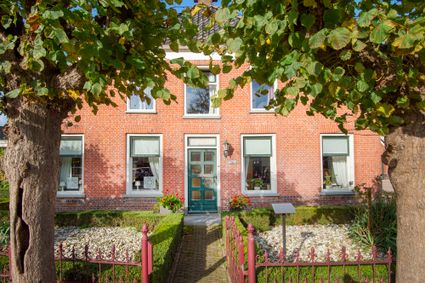 Garyp
Garyp
from your location
-
Uitkijktoren NIX
Uitkijktoren NIX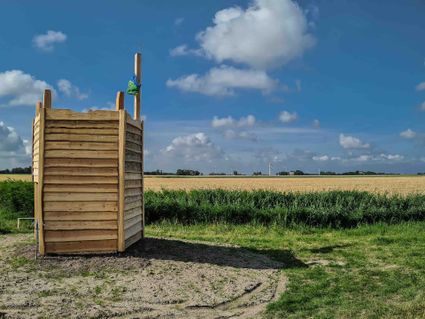 Pingjum
Pingjum
from your location
-
Zeilschool Neptunus - de Kerk
Zeilschool Neptunus - de Kerk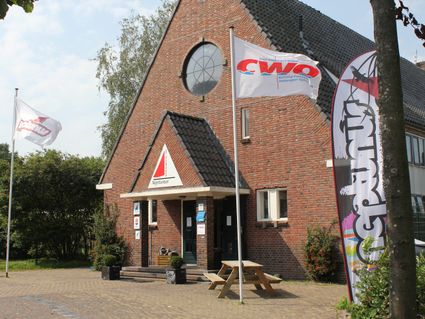 Idskenhuizen
Idskenhuizen
Direct boekbaar
from your location
-
De Haan Watersport
De Haan Watersport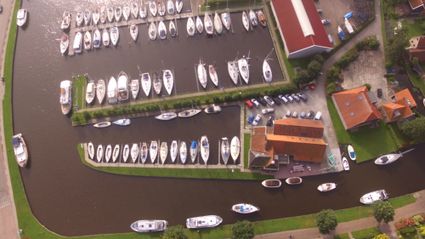 Workum
Workum
from your location
-
Zwembad De Klomp
Zwembad De Klomp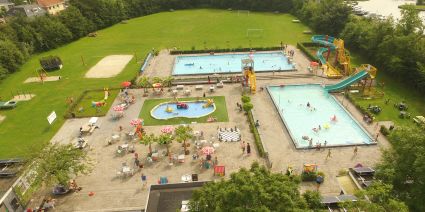 Wommels
Wommels
from your location
-
Monument zeemijn
Monument zeemijn Lioessens
Lioessens
from your location
-
Kattencafé PoesPas
Kattencafé PoesPas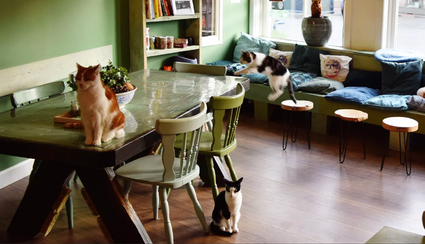 Leeuwarden
Leeuwarden
from your location
-
Gast op stal
Gast op stal Wijns
Wijns
from your location
-
Wier
Wier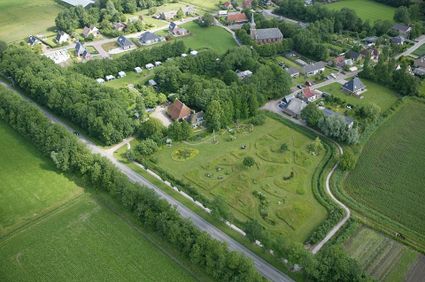 Wier
Wier
from your location
-
Rollsperre in Harlingen
Rollsperre in Harlingen
Harlingen was onderdeel van de Duitse kustverdediging. Dit betekende dat de bezetter maatregelen had getroffen om te kunnen optreden tegen landingen vanuit zee, aanvallen over land en landingen vanuit de lucht. Er waren verschillende versperringen aangelegd op wegen en op het spoor. Buiten de stad waren mijnenvelden en zogenoemde ‘Luftlandehindernisse’ (obstakels bedoeld om luchtlandingen te voorkomen) aangelegd.
Veel wegverkeer tussen Franeker en Harlingen kwam vroeger over de Midlumerweg (nu de Midlumerlaan). Het Van Harinxmakanaal en de Tjerk Hiddessluizen waren nog niet aangelegd.
Hier op de Midlumerweg hadden de Duitsers bij de brug over de Ried een zogenoemde Rollsperre geplaatst. Dat was een wegversperring waarbij de doorgang werd afgesloten met een grote ronde steen die in de opening kon worden gerold.
Bij de bevrijding hebben de Canadezen Harlingen met artillerie beschoten. Ook deze versperring was daarbij een doelwit omdat het op de belangrijkste toegangsweg naar de stad lag en de bezetter daar vrijwel zeker troepen had geplaatst. Op één van de twee toegangswegen aan de zuidkant van Harlingen, de Westerzeedijk, was ook zo’n Rollsperre geplaatst.
Na de oorlog werden de versperringen door de Royal Canadian Engineers gesloopt.
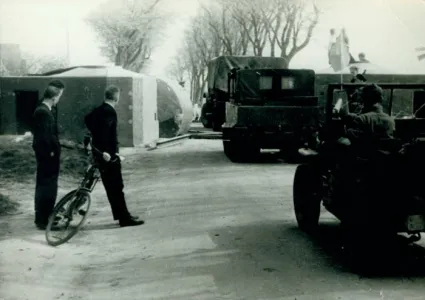 Harlingen
Harlingen
from your location
-
-
Hotel de Wijnberg - Comfort mindervalide kamer
Hotel de Wijnberg - Comfort mindervalide kamer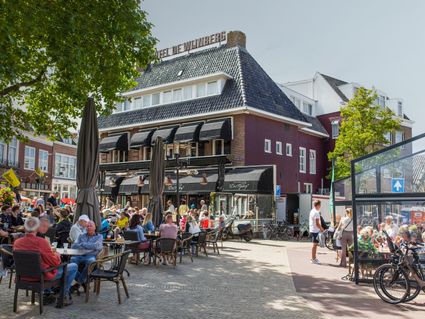 Bolsward
Bolsward
Direct boekbaar
from your location
-
Restaurant Onder de Linden
Restaurant Onder de Linden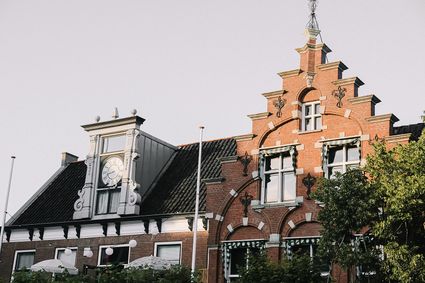 Sneek
Sneek
from your location


